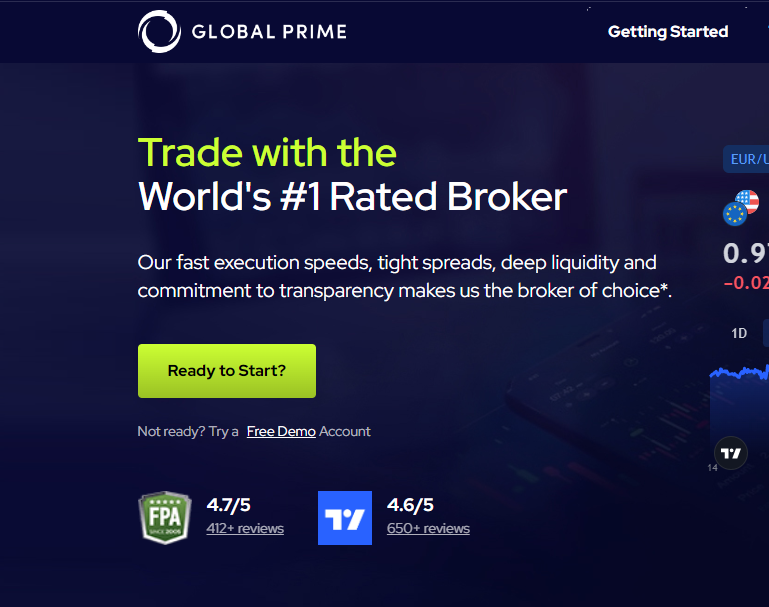Have you ever wondered why the price of goods and services keeps increasing over time? This phenomenon is known as inflation, and it has a major impact on our purchasing power. Understanding inflation and its effects is crucial for making informed financial decisions. In this article, we will talk about inflation and explore how it affects the value of money and our ability to buy goods and services.
Inflation is the general increase in prices over time, resulting in a decrease in purchasing power. This means that the same amount of money can buy fewer goods and services as time goes on. It is influenced by various factors such as supply and demand, government policies, and changes in the economy.
By understanding inflation and its effects, you can anticipate changes in the cost of living, plan your investments wisely, and protect your savings from losing value.
What is inflation?
Inflation is the general increase in prices over time, resulting in a decrease in purchasing power. This means that the same amount of money can buy fewer goods and services as time goes on. It is influenced by various factors such as supply and demand, government policies, and changes in the economy.
There are different ways to measure inflation, but the most commonly used indicator is the Consumer Price Index (CPI). The CPI tracks the changes in the prices of a basket of goods and services that represent the average consumer’s spending habits. When the CPI increases, it indicates that inflation is occurring.
Inflation can be seen as both a natural and necessary part of a functioning economy. It encourages spending and investment, as people are motivated to use their money rather than hold onto it. However, excessive inflation can be detrimental to the economy and individuals’ financial well-being.
Types and Causes of Inflation
Inflation can be categorized into different types based on various criteria. Here are some common types of inflation:
1. Demand-Pull Inflation
This type of inflation occurs when the aggregate demand for goods and services in an economy exceeds the aggregate supply. It is often associated with strong economic growth, increased consumer spending, and high levels of business investment.
Cause: Increased demand, often fueled by factors like government spending, low interest rates, or high consumer confidence.
2. Cost-Push Inflation
Cost-push inflation is characterized by rising prices due to an increase in the cost of production. This can result from factors such as increased wages, higher raw material costs, or other input costs.
Cause: Rising production costs that are passed on to consumers in the form of higher prices.
3. Built-In Inflation (Wage-Price Spiral)
This type of inflation is driven by a self-reinforcing cycle of rising wages and prices. When workers demand higher wages, businesses pass on those higher labour costs to consumers in the form of higher prices. In response, workers may demand even higher wages, leading to a continuous cycle.
4. Hyperinflation
Hyperinflation is an extremely high and typically accelerating inflation. It often results in a breakdown of the normal functioning of an economy, with prices rising at an astronomical rate.
Cause: Hyperinflation is often caused by factors such as excessive money supply growth, loss of confidence in the currency, and economic instability.
5. Stagflation
Stagflation is a situation where an economy experiences stagnant growth (or recession) combined with high inflation. This is considered an unusual and challenging economic scenario because inflation and unemployment are typically inversely related.
Cause: Stagflation can result from various factors, such as supply shocks, high production costs, or a combination of weak economic growth and increased demand.
6. Open Inflation:
Open inflation occurs when the prices of goods and services rise openly, and the public is aware of the increase in prices.
Cause: Factors contributing to open inflation include increased demand, rising production costs, or external factors like changes in global commodity prices.
7. Suppressed Inflation
Suppressed inflation refers to a situation where the actual inflation rate is higher than the reported or officially announced rate. This can happen due to various reasons, including government interventions, price controls, or manipulation of inflation data.
Cause: Government policies aimed at downplaying the true extent of inflation for political or economic reasons.
8. Galloping Inflation
Galloping inflation is a term used to describe a very high and accelerating inflation rate. While not as extreme as hyperinflation, galloping inflation still involves rapid increases in prices.
Cause: Similar to hyperinflation, galloping inflation can be triggered by factors such as excessive money supply growth, loss of confidence in the currency, and economic instability.
The effects of inflation on purchasing power
One of the most significant effects of inflation is the decrease in purchasing power. As prices rise, the value of money declines and each unit of currency can buy fewer goods and services. This means that individuals have to spend more money to maintain their standard of living.
Inflation erodes the value of savings over time. If the interest earned on savings does not keep pace with inflation, the real value of the savings diminishes. This is why it is important to consider inflation when planning for retirement or long-term financial goals.
Inflation also affects borrowers and lenders. When there is inflation, the value of money decreases, which means that the real value of debt decreases over time. This benefits borrowers, as they can repay their loans with money that is worth less than when they borrowed it. On the other hand, lenders lose out as the purchasing power of the money they receive decreases.
How inflation impacts different sectors of the economy
Inflation affects different sectors of the economy in various ways. Let’s explore some of the key sectors and how they are impacted by inflation:
1. Housing
Inflation can lead to rising housing costs, including rent and mortgage payments. This can make it more difficult for individuals to afford adequate housing, especially for those with fixed incomes.
2. Food and groceries
As the cost of production increases due to inflation, the prices of food and groceries also rise. This can put a strain on households with limited budgets, making it harder to afford essential items.
3. Healthcare
Inflation in the healthcare sector can have significant implications for individuals’ access to medical services and the cost of insurance premiums. Rising healthcare costs can make it more challenging for individuals to afford necessary medical care.
4. Education
Inflation can impact the cost of education, including tuition fees and textbooks. This can make obtaining a higher education more expensive and potentially limit access to education for some individuals.
5. Investments
Inflation can affect the returns on investments, particularly fixed-income investments such as bonds. If the interest earned on investments does not keep pace with inflation, the real return on investment can be negative.
6. Wages
Inflation can lead to higher wages as workers demand higher compensation to maintain their purchasing power. However, if wages do not keep up with inflation, workers may struggle to meet their financial needs.
Strategies to protect your purchasing power during inflation
While inflation is a natural part of the economy, there are strategies you can employ to protect your purchasing power. Here are some tips to consider:
1. Diversify your investments
Investing in a mix of assets such as stocks, bonds, and real estate can help protect against inflation. Different assets may perform better during inflationary periods so diversification can mitigate risk.
2. Consider inflation-protected securities
Treasury Inflation-Protected Securities (TIPS) are bonds issued by the government that provide protection against inflation. The principal value of TIPS adjusts with inflation, ensuring that the purchasing power is maintained.
3. Invest in commodities
Commodities such as gold, silver, or oil can act as a hedge against inflation. These assets tend to perform well during inflationary periods, as their prices rise with inflation.
4. Increase your income
Consider ways to increase your income to keep up with inflation. This could include negotiating a raise, starting a side business, or investing in your education to enhance your earning potential.
5. Review your expenses
Take a closer look at your expenses and find areas where you can cut costs. By reducing unnecessary expenditures, you can offset the impact of inflation on your budget.
Also Read: Currency Devaluation vs Currency Floating: Fixed Rate vs Floating Rate
Historical examples of inflation and its consequences
Throughout history, there have been several notable examples of high inflation and its consequences.
These historical examples serve as a reminder of the devastating effects that unchecked inflation can have on individuals and economies. They highlight the importance of sound monetary policies and responsible fiscal management to control inflation.
1. Hyperinflation in the Weimar Republic (Germany), 1920s
Inflation Rate: Hyperinflation reached astronomical levels, with prices doubling every few days.
Consequences: The German mark became virtually worthless. People needed wheelbarrows of money to buy basic goods. Savings were wiped out, and economic chaos ensued. This period contributed to social and political instability, ultimately paving the way for the rise of Adolf Hitler.
2. Hyperinflation in Zimbabwe, 2000s
Inflation Rate: Hyperinflation reached its peak in November 2008, with the inflation rate estimated in the billions of percentage points.
Consequences: The Zimbabwean dollar became worthless, and the economy collapsed. There were severe shortages of basic goods, unemployment soared, and the country faced a humanitarian crisis. In 2009, Zimbabwe abandoned its own currency in favor of using foreign currencies.
3. Hyperinflation in Argentina, 1980s-1990s
Inflation Rate: Hyperinflation hit Argentina in the late 1980s, with annual inflation reaching several thousand percent.
Consequences: The economy experienced periods of recession and hyperinflation. The government implemented economic reforms, including the introduction of a new currency (the Argentine peso) and pegging it to the U.S. dollar. While this initially stabilized the economy, it also contributed to other economic challenges in the long run.
4. Hyperinflation in Brazil, 1980s-1990s
Inflation Rate: Hyperinflation in Brazil peaked in the late 1980s and early 1990s, with monthly inflation rates exceeding 80% at times.
Consequences: The Brazilian government implemented several economic plans to control hyperinflation, including changing currencies and introducing a new currency (the real). These measures helped to bring inflation under control, but they also had social and economic repercussions.
5. High Inflation in the United States, 1970s
Inflation Rate: The United States experienced high inflation during the 1970s, with annual rates reaching double digits.
Consequences: This period, known as “stagflation,” combined high inflation with stagnant economic growth and high unemployment. It was a challenging economic environment that required a combination of monetary and fiscal policies to address.
6. Hyperinflation in Venezuela, 2010s
Inflation Rate: Hyperinflation hit Venezuela in the mid-2010s, with inflation reaching astronomical levels, estimated in the millions of percentage points.
Consequences: The Venezuelan bolivar depreciated rapidly, leading to extreme economic hardship. There were shortages of essential goods, a collapse of public services, and a humanitarian crisis. The political and social consequences have been profound, with a significant impact on the country’s stability.
Also Read: The Most Richest Countries In The World, And The Factors Driving Their Prosperity
Government policies to control inflation
Governments play a crucial role in controlling inflation through various policies. Central banks are responsible for implementing monetary policies that aim to maintain price stability. Some common measures used to control inflation include:
1. Raising interest rates
By increasing interest rates, central banks can reduce borrowing and spending, thereby slowing down the economy and reducing inflationary pressures.
2. Tightening monetary policy
Central banks can also reduce the money supply by selling government securities or increasing reserve requirements for banks. This reduces the amount of money available for lending and spending, curbing inflation.
3. Fiscal policy measures
Governments can implement fiscal policies such as reducing government spending or increasing taxes to cool down the economy and control inflation.
4. Wage controls
In some cases, governments may implement wage controls to limit the increase in wages and prevent excessive inflation.
The relationship between inflation and interest rates
Inflation and interest rates are closely intertwined. Central banks often use interest rates as a tool to control inflation. When inflation is high, central banks typically raise interest rates to slow down the economy and reduce inflationary pressures. Higher interest rates make borrowing more expensive, which reduces spending and helps curb inflation.
On the other hand, when inflation is low or the economy is experiencing a downturn, central banks may lower interest rates to stimulate borrowing and spending, thereby boosting economic activity.
Savers and investors also need to consider the relationship between inflation and interest rates. If the interest earned on savings does not keep pace with inflation, the real value of savings will erode over time. Investors seeking higher returns may need to take on more risk by investing in assets that have the potential to outpace inflation.
The Bottom Line
Understanding inflation and its effects on purchasing power is essential for making informed financial decisions. Inflation erodes the value of money over time, making it crucial to consider its impact when planning for the future.
By anticipating changes in the cost of living, individuals can adjust their budgets and investments accordingly. Diversifying investments, considering inflation-protected securities, and increasing income are strategies that can help protect purchasing power during inflationary periods.
_____
Disclaimer: The information provided in this article is for informational purposes only. It should not be considered financial advice. Please consult with a financial advisor or professional before making any financial decisions.







